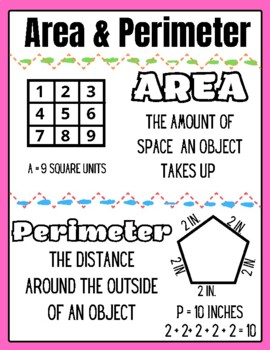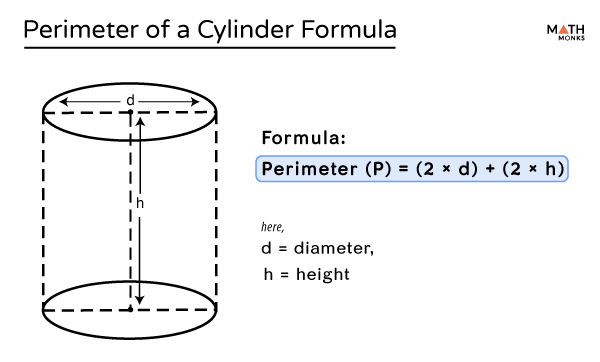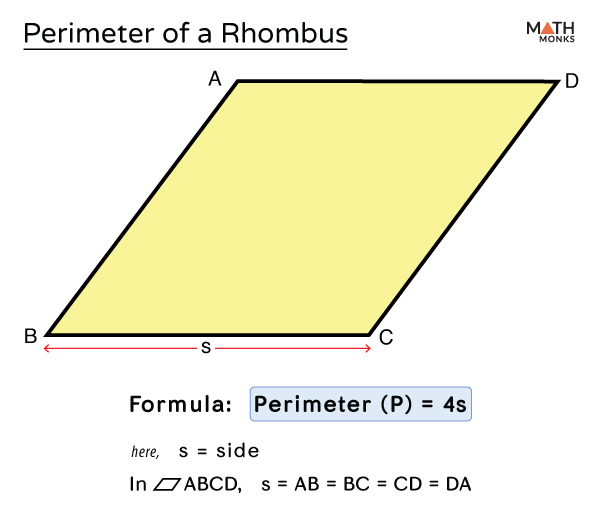Topic how to compute perimeter of a square: Learn how to compute the perimeter of a square with our comprehensive guide. This article will walk you through the basic concepts, the step-by-step calculation process, practical examples, and common mistakes to avoid. Perfect for students, teachers, and anyone looking to master this fundamental geometry skill.
Table of Content
- How to Compute the Perimeter of a Square
- Introduction
- Understanding the Concept of Perimeter
- Definition of a Square
- Basic Geometry of a Square
- Formula for Calculating the Perimeter
- Step-by-Step Calculation Process
- Examples and Practical Applications
- Common Mistakes to Avoid
- Frequently Asked Questions (FAQs)
- Conclusion
- YOUTUBE: Hướng dẫn chi tiết cách tìm chu vi hình vuông. Theo dõi video Toán Học với Thầy J để hiểu rõ hơn!
How to Compute the Perimeter of a Square
The perimeter of a square is the total length of all four sides of the square. Since all sides of a square are of equal length, calculating the perimeter is straightforward.
Formula for Perimeter of a Square
The formula to compute the perimeter (P) of a square when the length of one side (s) is known is:
Step-by-Step Calculation
- Identify the length of one side of the square. Let's denote this length as \( s \).
- Multiply the length of one side by 4, since a square has four sides of equal length.
Example Calculation
Suppose the length of one side of a square is 5 units. The perimeter of the square can be calculated as follows:
\( P = 4 \times 5 = 20 \text{ units} \)
Summary
- The perimeter of a square is calculated by multiplying the length of one side by 4.
- If \( s \) is the side length, then the perimeter \( P \) is given by \( P = 4s \).

READ MORE:
Introduction
Understanding how to compute the perimeter of a square is a fundamental aspect of geometry. The perimeter is the total distance around the outside of the square. This guide will provide you with a thorough understanding of the concept, the formula, and the practical steps to calculate the perimeter efficiently.
In geometry, a square is defined as a four-sided polygon with equal sides and four right angles. Calculating the perimeter of a square is straightforward since all four sides are of equal length.
This comprehensive guide will cover:
- The basic concept of perimeter
- A clear definition of a square
- The formula for calculating the perimeter
- Step-by-step instructions for the calculation
- Real-world examples and applications
- Common mistakes to avoid
- Frequently asked questions
By the end of this guide, you will have a solid grasp of how to compute the perimeter of a square, enabling you to apply this knowledge in various practical scenarios.
Understanding the Concept of Perimeter
The perimeter of a shape refers to the total length around its boundary. For any polygon, the perimeter is calculated by adding the lengths of all its sides. Specifically, for regular polygons like squares, where all sides are equal, the perimeter is found by multiplying the length of one side by the number of sides.
In mathematical terms, the perimeter (P) of a square can be expressed as:
P = 4 × side
where "side" represents the length of one side of the square. This formula highlights that knowing the length of just one side allows us to determine the total distance around the square.
Understanding the concept of perimeter is crucial in various real-life applications, such as determining the amount of fencing needed to enclose a garden or the length of trim required to border a square-shaped object.
Definition of a Square
A square is a four-sided polygon, also known as a quadrilateral, with the following characteristics:
- Equal Sides: All four sides of a square are of equal length.
- Right Angles: Each of the four interior angles is a right angle (90 degrees).
- Parallel Sides: Opposite sides are parallel to each other.
In geometric terms, a square can be defined as a regular quadrilateral because it has all sides equal and all angles equal. Here is a more formal definition:
A square is a plane figure with four equal straight sides and four right angles.
To visually represent a square, consider the following figure:
| _____ |
| | | |
| | | |
| ----- |
In algebraic terms, if the length of one side of the square is denoted as s, then:
- All sides are equal: s
- All angles are equal: 90°
The properties of a square make it a special type of rectangle (where all sides are equal) and also a special type of rhombus (where all angles are right angles).
These fundamental properties are essential for understanding how to compute the perimeter and other geometrical aspects of a square.
Basic Geometry of a Square
The geometry of a square is fundamental to understanding its properties and how to perform calculations involving it. Here are the key geometric aspects of a square:
- Vertices: A square has four vertices (corners).
- Sides: All four sides are of equal length, denoted by s.
- Angles: Each interior angle of a square is a right angle, which measures 90 degrees.
- Diagonals: A square has two diagonals that bisect each other at right angles. These diagonals are equal in length and can be calculated using the Pythagorean theorem. The length of each diagonal, d, is given by: \[ d = s\sqrt{2} \]
The following table summarizes the basic geometric properties of a square:
| Property | Value/Formula |
| Sides | \( s \) |
| Angles | 90° each |
| Diagonals | \( s\sqrt{2} \) |
To understand these properties better, let's look at the steps to calculate the length of the diagonals:
- Identify the length of one side of the square, denoted by s.
- Apply the Pythagorean theorem in one of the right triangles formed by the diagonal: \[ d = \sqrt{s^2 + s^2} = \sqrt{2s^2} = s\sqrt{2} \]
Additionally, the perimeter of the square is simply the sum of all its sides, which is calculated as:
\[
\text{Perimeter} = 4s
Understanding these fundamental geometric properties allows for a deeper comprehension of a square's behavior and aids in various geometric calculations, including the perimeter, area, and diagonal lengths.

Formula for Calculating the Perimeter
The perimeter of a square is the total length of all four sides of the square. Since all sides of a square are equal in length, calculating the perimeter is straightforward. The formula for the perimeter (P) of a square with side length (s) is given by:
\[
P = 4s
\]
This formula indicates that you simply need to multiply the length of one side by 4 to get the perimeter. Here's a step-by-step breakdown:
- Measure the length of one side of the square. Let's call this length s.
- Multiply the length of the side by 4:
\[
P = 4 \times s
\] - The result is the perimeter of the square.
For example, if the side length of a square is 5 units, the perimeter is calculated as follows:
\[
P = 4 \times 5 = 20 \text{ units}
\]
This simple formula allows you to quickly and easily determine the perimeter of any square as long as you know the length of one side.
Step-by-Step Calculation Process
Calculating the perimeter of a square is a straightforward process. Follow these steps to determine the perimeter accurately:
-
Understand the Formula: The formula for calculating the perimeter of a square is:
\[ P = 4 \times s \]
Where \( P \) is the perimeter and \( s \) is the length of one side of the square.
-
Measure the Side Length: Use a ruler or any measuring tool to measure the length of one side of the square. Ensure the measurement is accurate.
-
Apply the Formula: Substitute the measured side length into the formula. For example, if the side length (\( s \)) is 5 units, the calculation will be:
\[ P = 4 \times 5 \]
-
Perform the Multiplication: Multiply the side length by 4 to get the perimeter. Using the previous example:
\[ P = 4 \times 5 = 20 \]
-
Write Down the Result: The perimeter of the square is 20 units. Ensure to include the units in your final answer.
By following these steps, you can easily calculate the perimeter of any square. It's essential to measure accurately and perform the multiplication correctly to ensure the right result.
Examples and Practical Applications
Understanding how to compute the perimeter of a square can be useful in various practical scenarios. Let's explore some examples and applications to reinforce this concept.
Example 1: Basic Calculation
Consider a square with each side measuring 5 cm. To find the perimeter, we use the formula:
\[ \text{Perimeter} = 4 \times \text{side length} \]
Plugging in the side length:
\[ \text{Perimeter} = 4 \times 5 = 20 \text{ cm} \]
Example 2: Perimeter of a Garden
Imagine you have a square garden with each side measuring 10 meters. To determine the length of fencing needed to surround the garden, calculate the perimeter:
\[ \text{Perimeter} = 4 \times 10 = 40 \text{ meters} \]
Therefore, you will need 40 meters of fencing to enclose the garden.
Example 3: Classroom Bulletin Board
A classroom has a square bulletin board where each side is 2 meters long. To find the total length of border trim required, compute the perimeter:
\[ \text{Perimeter} = 4 \times 2 = 8 \text{ meters} \]
You will need 8 meters of border trim for the bulletin board.
Practical Application: Construction and Carpentry
In construction and carpentry, knowing how to calculate the perimeter of a square is essential. For instance, when laying tiles in a square room or framing a square window, the perimeter helps determine the amount of material needed.
- Example: A square room with each side measuring 3 meters requires calculating the perimeter to install a baseboard.
- \[ \text{Perimeter} = 4 \times 3 = 12 \text{ meters} \]
- Therefore, 12 meters of baseboard are needed to go around the room.
Example 4: Art and Design
Artists and designers often create square frames for pictures or artwork. Knowing the perimeter helps in selecting the right amount of framing material.
For a square frame with each side measuring 0.5 meters:
\[ \text{Perimeter} = 4 \times 0.5 = 2 \text{ meters} \]
Thus, 2 meters of framing material is required.
Example 5: Fabric and Sewing
When sewing a square tablecloth or quilt, knowing the perimeter aids in purchasing the right amount of fabric or trim.
For a square tablecloth with each side measuring 1.2 meters:
\[ \text{Perimeter} = 4 \times 1.2 = 4.8 \text{ meters} \]
You will need 4.8 meters of fabric trim.
Summary
These examples illustrate how calculating the perimeter of a square is a fundamental skill applied in various real-life situations, from gardening and construction to art and sewing. Mastering this concept ensures accurate measurements and efficient material usage.
Common Mistakes to Avoid
Calculating the perimeter of a square may seem straightforward, but there are several common mistakes that can lead to incorrect results. Here are some key pitfalls to be aware of:
- Misidentifying the Shape: Ensure you are working with a square, where all four sides are of equal length. Confusing a square with another quadrilateral, such as a rectangle, will lead to incorrect calculations.
- Incorrect Formula Application: The perimeter of a square is given by \( P = 4 \times \text{side} \). Using incorrect formulas, such as those for other shapes, can lead to errors.
- Units Mismatch: Consistency in units is crucial. Ensure all measurements are in the same unit before performing calculations. Converting units incorrectly can significantly alter the results.
- Misunderstanding Area vs. Perimeter: Confusing the concepts of area and perimeter is common. Remember, the perimeter is the total length around the square, while the area is the space contained within it.
- Calculation Errors: Simple arithmetic errors can lead to wrong results. Double-check your calculations to ensure accuracy.
- Incorrect Side Length from Diagonal: If given the diagonal, remember that the side length \( s \) of a square can be found using \( s = \frac{\text{diagonal}}{\sqrt{2}} \). Misapplying this formula can lead to incorrect side lengths and, consequently, incorrect perimeters.
Here are detailed examples highlighting these common mistakes:
-
Example 1: Incorrect Shape Identification
If you mistakenly identify a rectangle as a square, and calculate the perimeter using \( P = 4 \times \text{side} \), you will get the wrong result. Always ensure you are dealing with a square.
-
Example 2: Formula Misapplication
If a square has a side length of 5 units, the correct perimeter is \( P = 4 \times 5 = 20 \) units. Using an incorrect formula, like the area formula \( A = s^2 \), would not provide the perimeter.
-
Example 3: Units Mismatch
If the side length is given as 3 meters and 50 centimeters, convert all measurements to the same unit (e.g., 3.5 meters) before calculating: \( P = 4 \times 3.5 = 14 \) meters. Incorrect unit conversion would lead to an erroneous result.
-
Example 4: Confusing Area and Perimeter
If the side of the square is 6 units, the perimeter is \( P = 4 \times 6 = 24 \) units, not \( 6^2 = 36 \) units, which is the area.
-
Example 5: Arithmetic Errors
For a square with side length 8 units, the correct perimeter is \( P = 4 \times 8 = 32 \) units. An arithmetic error, such as calculating \( 4 \times 8 = 30 \), would yield an incorrect result.
-
Example 6: Diagonal to Side Length Conversion
For a square with a diagonal of 10 units, the side length is \( s = \frac{10}{\sqrt{2}} \approx 7.07 \) units. Therefore, the perimeter is \( P = 4 \times 7.07 \approx 28.28 \) units. Misapplying the diagonal formula can lead to incorrect side lengths and perimeters.
By avoiding these common mistakes, you can ensure accurate calculation of the perimeter of a square every time.

Frequently Asked Questions (FAQs)
-
What is the Perimeter of a Square?
The perimeter of a square is the total length around its boundary. It is calculated by summing the lengths of all four sides. Since all sides of a square are equal, the formula to find the perimeter is:
\( P = 4 \times \text{side} \)
-
What is the Formula for the Perimeter of a Square?
The formula to calculate the perimeter of a square is:
\( P = 4 \times \text{side} \)
-
How to Calculate the Perimeter of a Square?
To calculate the perimeter of a square, simply multiply the length of one side by 4. For example, if the side length is 5 cm:
\( P = 4 \times 5 = 20 \) cm
-
How to Find the Side Length of a Square When the Perimeter is Given?
If the perimeter \( P \) is known, the side length \( s \) can be found using the formula:
\( s = \frac{P}{4} \)
For example, if the perimeter is 40 cm:
\( s = \frac{40}{4} = 10 \) cm
-
How to Find the Perimeter of a Square When the Area is Given?
If the area \( A \) is known, first find the side length using the formula:
\( s = \sqrt{A} \)
Then calculate the perimeter:
\( P = 4 \times s \)
For example, if the area is 36 cm²:
\( s = \sqrt{36} = 6 \) cm
\( P = 4 \times 6 = 24 \) cm
-
How to Find the Perimeter of a Square When the Diagonal is Given?
If the diagonal \( d \) is known, the side length \( s \) can be calculated using the formula:
\( s = \frac{d}{\sqrt{2}} \)
Then, calculate the perimeter:
\( P = 4 \times s \)
For example, if the diagonal is 8 cm:
\( s = \frac{8}{\sqrt{2}} = 4\sqrt{2} \) cm
\( P = 4 \times 4\sqrt{2} = 16\sqrt{2} \) cm
-
What is the Unit of Perimeter of a Square?
The perimeter of a square is measured in linear units such as centimeters (cm), meters (m), inches (in), etc., depending on the units used for the side length.
-
How to Use a Perimeter of Square Calculator?
To use a perimeter calculator, input the side length of the square into the calculator. It will automatically apply the formula \( P = 4 \times \text{side} \) to give you the perimeter.
Conclusion
In conclusion, calculating the perimeter of a square is a straightforward task that requires understanding the basic properties of a square. Since all four sides of a square are equal in length, the formula for the perimeter is simply:
\( P = 4 \times \text{side} \)
where "side" represents the length of one of the sides of the square.
To summarize the key points:
- The perimeter of a square is the total distance around the outside of the square.
- Given the length of one side, you can easily calculate the perimeter by multiplying that length by 4.
- This formula can be applied regardless of the units used, whether they be centimeters, meters, inches, or feet.
- Understanding this basic principle can be helpful in a variety of practical applications, from fencing a garden to framing a piece of art.
By mastering this simple formula, you can efficiently solve many real-world problems involving the perimeter of squares. Always remember to double-check your measurements and calculations to avoid common mistakes such as confusing the perimeter with the area or mixing up units. With practice, determining the perimeter of a square will become an intuitive and easy task.
We hope this comprehensive guide has provided you with a clear understanding of how to compute the perimeter of a square. For more detailed examples and additional practice, be sure to explore related mathematical resources and exercises.
Hướng dẫn chi tiết cách tìm chu vi hình vuông. Theo dõi video Toán Học với Thầy J để hiểu rõ hơn!
Cách Tìm Chu Vi Hình Vuông | Toán Học với Thầy J
READ MORE:
Hướng dẫn chi tiết cách tìm diện tích và chu vi hình vuông. Theo dõi video để hiểu rõ hơn!
Cách Tìm Diện Tích và Chu Vi Hình Vuông












